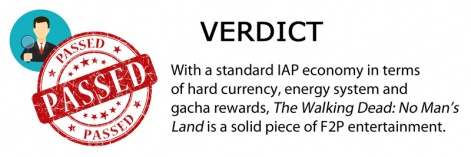Welcome back to the In-App Purchase Inspector- our regular look at free-to-play games from the consumer's perspective.
In each instalment, we consider the incentives or pressure applied to make in-app purchases, their perceived value, the expansion offered by IAPs and the overall value of the experience.
The end goal is to see whether the game makes a good enough case for us to part with our cash, or whether players are content - or engaged enough - to 'freeload'.
This time, we're taking a look at The Walking Dead: No Man's Land, Next Games' official mobile game tie-in to the AMC TV series.
Undead again
Zombies, particularly those of The Walking Dead-branded variety, have been hot property on the App Store of late.
Only a month after The Walking Dead: Road to Survival, Scopely' and IUGO's take on Robert Kirkman's original graphic novels, comes Next Games' take on the hit AMC TV series.
Subtitled No Man's Land, this latest attempt to capture the spirit of The Walking Dead on mobile is - somewhat predictably - a base-building strategy game in which you expand your camp, recruit more survivors, and periodically bash zombies' heads in.
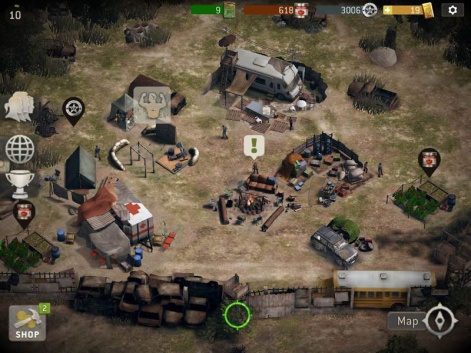
There is a certain thematic cohesion that makes post-apocalyptic survival particularly well-suited to free-to-play games of this nature - see Fallout Shelter, for instance - as you eke out an existence on limited resources.
However, despite heading in a different direction with an X-COM-lite approach to turn-based combat, it does occasionally feel less No Man's Land and more Well-Trodden Ground.
Old friend
However, while not immediately thrilling from a gameplay perspective, there is a certain solidity in No Man's Land. It knows what it wants to be, and it executes it well.
A free-to-play game with few frills, here we have two resources in constant production - Supplies for use on buildings and Experience Points for use on survivors - with the standard Gold as its hard currency.
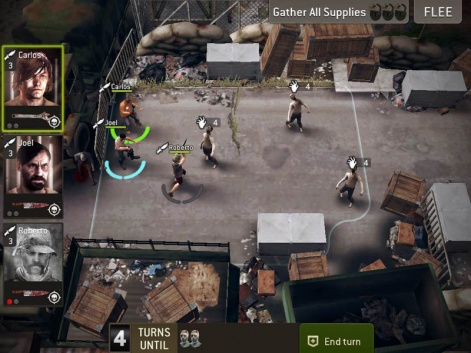
Everything relating to how these currencies function should be clear to anyone with experience of free-to-play strategy.
Post-apocalyptic survival is well-suited to free-to-play games.
Resources are accrued at your camp over time, or for completing missions, and can be used to build and upgrade things for free. Meanwhile, Gold largely costs real-life money and can be used to buy missing resources or skip wait timers.
Gold packs range from $4.99 for 500 to $99.99 for 14,000, as well as various bundles including a combination of Gold and other resources including weapons and Supplies.
Ticking all boxes
That's the monetisation covered inasmuch as it relates to base-building, but when you venture out into turn-based combat there are two other familiar free-to-play systems that come into play.
The first is an energy system, in this case manifested as Gas, in which 2 Gas is used for every mission.
It replenishes automatically at a rate of 1 per 10 minutes, and - when depleted entirely - costs a fairly hefty 55 Gold to restore to capacity.
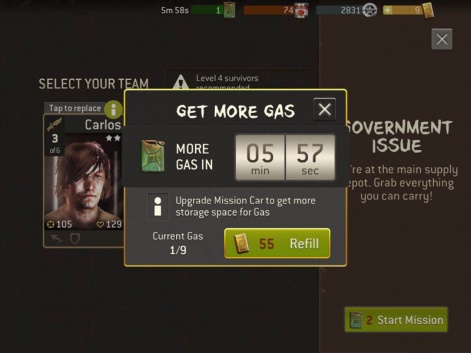
Missions aren't long, particularly as the difficulty begins to ramp up and premature failure becomes more frequent, and so this Gas system is a relatively low ceiling you'll bump your head against when attempting to play for any significant length of time.
Interestingly, upgrading the mission car back at your base will also increase your Gas capacity, so it is something improvable - albeit an enhancement that can be easily undone by a simple rise in a mission's Gas cost.
The other is a randomised reward system for each successful mission, which offers you the choice of any 3 lootcrates from a selection of 9.
These lootcrates can contain resources, weapons for survivors, or even Gold. However, if you're unsatisfied with the yield of your 3 selections, you can either pay 25 Gold or watch an incentivised video ad to select another 3.
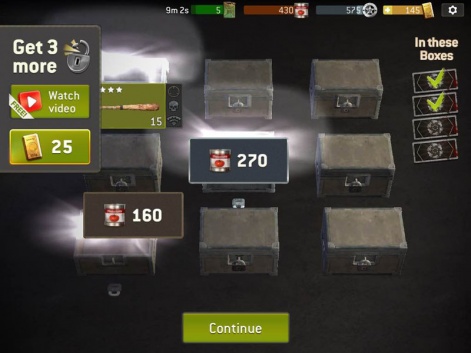
If so inclined, you can do this twice to claim the contents of all 9 loot crates.
With hard currency, an energy system, and incent video ads - monetisation is out in full force.
Among the usual glut of ads for other mobile games, there's also an advert for The Walking Dead TV series upon which the game is based. However, having been shown this the first time I viewed an ad and never since, it's unclear whether it's on the same rotation as the rest.
The cost of living
So that's hard currency, an energy system, and incentivised video ads - monetisation is out in full force in No Man's Land.
However, it's not all take, take, take. Starting you out with 150 Gold (approximately $1.50 in real money), and drip-feeding hard currency through lootcrates and achievements, it's hardly a generous F2P experience but nor is it a brick wall.
Some of its bundle offers are pretty good value, too, and this is where I chose to invest my cash.
Enticed by the low price of $2.99 and the broad range it offered, I purchased the Fresh Survival Bundle, which includes: 400 Gold, 1 survivor slot, an epic-ranked weapon for the Scout unit type, full Gas, and full Supplies.
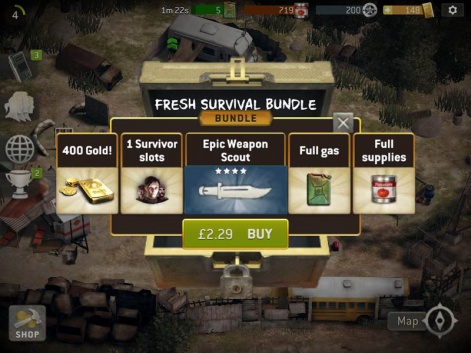
Priced lower than the $4.99 tier and offering almost as much Gold - not to mention all the other additional benefits - it's incredibly good value and a no-brainer for a first purchase.
Such bundles are by no means a new tactic for breaking the player's first spend barrier, of course, but this is one of the best examples this series has encountered thus far.
With careful play you can make Gold stretch a fair distance, too. The cost of buying new resources and skipping wait timers isn't too excessive, with the cost of replenishing Gas the only one that feels truly excessive.
The end times
We're back to where we started, then: No Man's Land is neither bad nor good, but simply what you'd expect.
It's what you'd use as an example if you were explaining free-to-play games to somebody who'd never played one before. It's got all the monetisation systems you can think of, and the familiar base-building gameplay.
It's an inoffensive experience with occasional glimmers of something more, but ultimately the benefit of treading the F2P path so closely is that it never oversteps the line.
